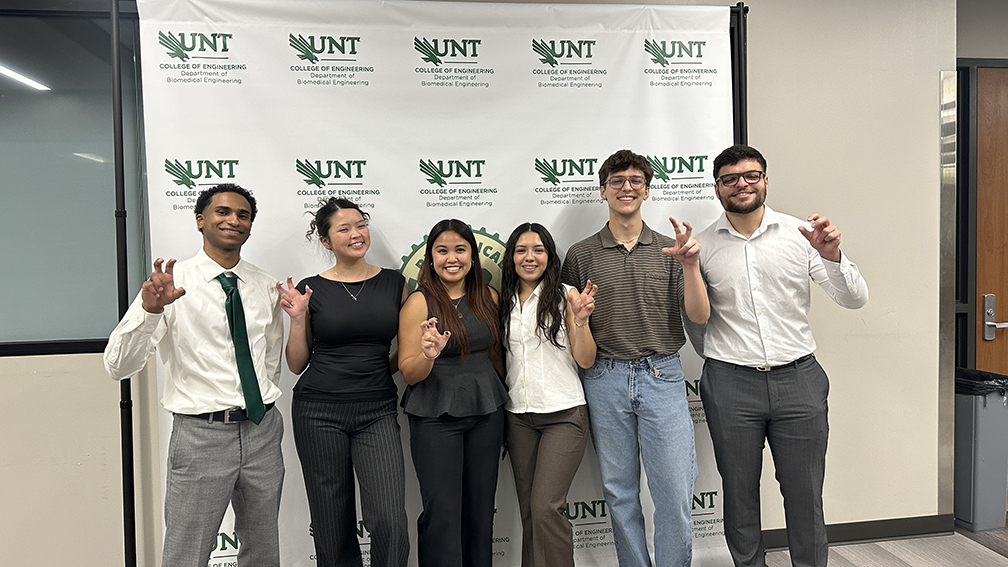
The healing process after breaking a bone can be slow and casts required for treatment can be uncomfortable and bulky.
University of North Texas students were challenged to design possible treatment alternatives for broken bones and fractures during this year’s Medical Device Make-A-Thon hosted by the student-run UNT Biomedical Engineering Society.
“Competitors were tasked with designing a creative solution that would rival the current clinical golden standard,” says biomedical engineering student Marc Anthony Torres, who serves as the BMES president.
As UNT prepares its students for their careers, student organizations on campus do the same with hands on events tailored to their majors. The UNT Biomedical Engineering Society offers a place for biomedical engineering students and those interested in the field to sharpen their skills, find internship opportunities and network. The Medical Device Make-A-Thon held last month is one of the society’s newer events encouraging students to become innovators on the fly.
“I competed in a Make-A-Thon at a national level when I was at Texas A&M in 2023,” Torres says. “I wanted to bring that same competitiveness and a platform for students to display their skills to UNT.”
The three-day competition featured eight teams. Students were given the theme on the first day and then had 24 hours to design a device. At the end of the first day, the teams presented their devices to a panel of judges made up of assistant professors Melanie Ecker and Huaxiao ‘Adam” Yang in biomedical engineering, alum and former BMES member Natanael Monroy and Jenna Roycraft, senior manager of regulatory affairs in software and digital health at Abbott, a medical device and health care company. Designs ranged from inflatable arm casts that are lightweight and easy to remove to a five-layered hip cast with biosensors and circuits to stimulate healing.
"This event serves as a major resume booster that refines the skills crucial for aspiring biomedical engineers."
-Marc Anthony Torres, president of UNT's Biomedical Engineering Soceity
“This event serves as a major resume booster that refines the skills crucial for aspiring biomedical engineers. It also provided an opportunity for our members to market themselves before the judging panel and get invaluable experience akin to senior design capstone projects,” Torres says.
Four teams went on to a final round where they were required to create 3D models of their designs and address any concerns and critiques voiced by judges in their initial presentations.
Clavi-Fusion, a team including students Praises Ogunbanwo, Anne Dausman and Mayre Mendez, took first place. They created a hybrid cast and sling for a broken clavicle, commonly called a collarbone, that allowed for more elbow and hand movement while also being breathable.
“When we were designing, we wanted something that was creative and could tackle the problem without sacrificing practicality,” says Ogunbanwo, a biomedical engineering senior who plans to work in the medical device industry. “It meant so much to me that we won. It validated my past four years of experience in biomedical engineering and all I’ve learned.”